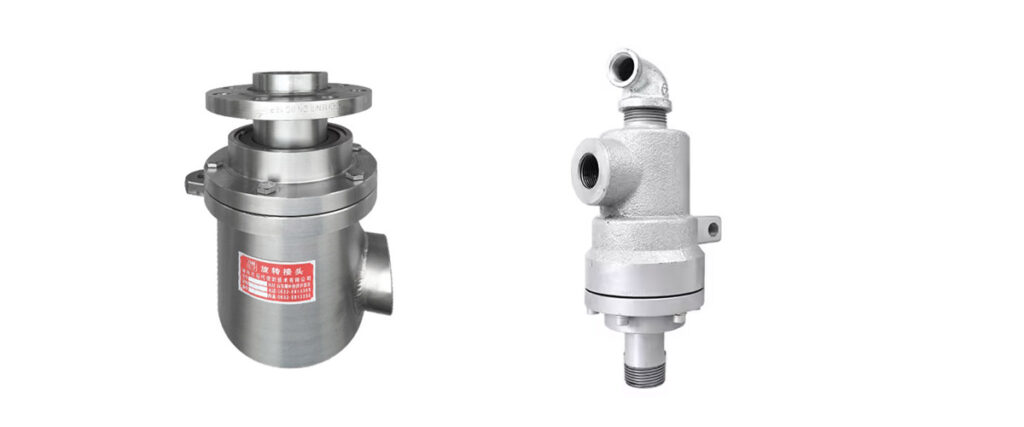Table of Contents
Introduction
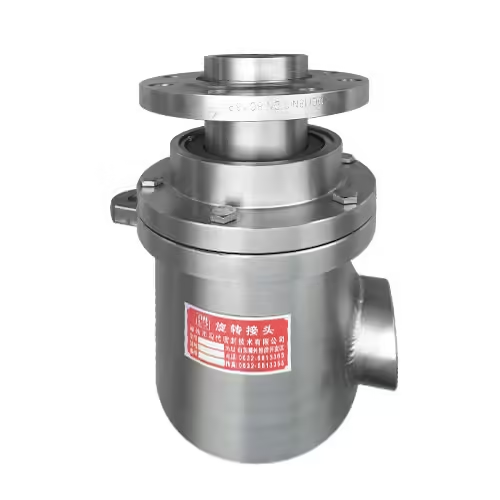
Efficient and safe heat transfer is essential in many industrial processes. Hot oil is the medium of choice for heating rollers, dryers, mixers and other rotating machinery due to its high thermal stability and excellent heat transfer properties. At the heart of this critical transfer process is the hot oil swivel Joint, a special rotary joint designed to facilitate the flow of hot thermal oil from a fixed oil supply system to the rotating components. Although hot oil swivel Joint are rugged and able to withstand harsh conditions, even the best-designed hot oil swivel Joint have a limited service life.
Over time, continued exposure to extreme temperatures, high pressures and mechanical stresses can cause hot oil swivel Joint to wear and degrade. Identifying early signs that a hot oil swivel Joint needs to be replaced is more than just a maintenance issue; it is a critical step in avoiding costly downtime, ensuring safe operations and maintaining the efficiency of your heat transfer system. Ignoring these signs can result in significant fluid loss, equipment damage, and even serious safety hazards due to leaks of high-temperature, high-pressure oil.
Modern Sealing is a leading manufacturer of high-quality dynamic and static sealing solutions that understands the complexities and requirements of every swivel Joint, especially those used to handle hot oil. With our extensive experience and numerous patented dynamic sealing technologies, we have helped countless industries maintain peak performance. This blog post is designed to help you identify signs that your hot oil swivel joint may be reaching the end of its service life, guiding you to intervene in time to ensure your operations remain smooth and safe.
Understanding the Role of a Hot Oil Rotary Joint
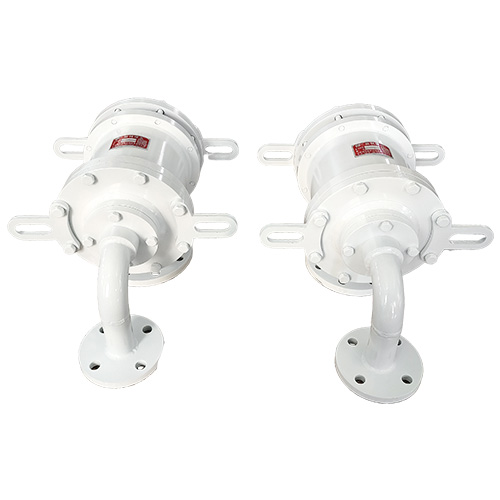
A rotary joint, in its most basic sense, is a mechanical seal that allows fluid to flow from a fixed inlet to a rotating shaft or drum. Thermal oil rotary joints are designed for applications involving thermal oils, which often operate at temperatures exceeding 200°C, sometimes even higher, and at widely varying pressures.
The unique challenges presented by thermal oils—its high operating temperatures, carbonization potential, and specific viscosity characteristics—require rotary unions to be more rugged and precision engineered than rotary joints used for water or air. Key components of a thermal oil rotary joint include specialized seals made from materials such as carbon graphite or silicon carbide that can withstand extreme heat and prevent leaks, and bearings designed to operate effectively in high-temperature environments. These components work together to ensure continuous, leak-free operation, which is essential to maintaining thermal efficiency and preventing hazardous situations. The integrity of every aspect of the rotary union is critical.
1. Visible Leaks of Hot Oil
Perhaps the most obvious and critical sign that your hot oil rotary joint requires attention is the presence of visible leaks. While a minimal amount of weeping (very slight, intermittent drips) might occur under certain conditions and within acceptable limits for specific designs, any consistent or significant leakage is a clear red flag.
- Drips and Puddles: The appearance of hot oil drips or puddles around the rotary union or on the surrounding equipment and floor indicates a failure in the primary sealing mechanism. This isn’t just a sign of inefficiency; it’s a major safety hazard due to the high temperature of the oil, posing risks of burns, fires, and slip-and-fall accidents. A leaking hot oil rotary joint means the containment system is compromised.
- Oil Residue and Staining: Even if you don’t see active dripping, look for oil residue, staining, or a thin film of oil accumulation on the exterior surfaces of the rotary union or the machine. This can indicate intermittent leaks or very slow seepage that still warrants investigation. This early warning sign for your rotary union can prevent larger issues.
- Frequent Oil Level Drops: If your thermal oil system requires increasingly frequent top-ups, and there’s no other obvious leak point in the piping, the hot oil rotary joint is a prime suspect. This indicates that a substantial amount of oil is escaping, even if it’s evaporating or being absorbed before forming noticeable puddles.
2. Abnormal Noise or Vibration

A healthy hot oil rotary joint should operate smoothly and quietly. Any new or escalating noises or vibrations emanating from the swivel Joint area are strong indicators of internal wear or damage.
- Grinding or Squealing Sounds: These noises often suggest wear or failure in the bearings or seals. When bearings in a hot oil rotary joint become worn or lose lubrication, they can generate friction and heat, leading to grinding sounds. Similarly, worn or misaligned seals can produce squealing as they rub against mating surfaces.
- Excessive Vibration: Increased vibration in the rotary joint itself or the connected rotating equipment can point to a worn rotary union bearing or an imbalance. This vibration not only indicates a problem with the hot oil rotary joint but can also accelerate wear on other machine components, leading to a cascade of failures if not addressed.
- Unusual Clicking or Rattling: Such sounds might signal loose internal components, fatigued springs, or damaged mechanical seals within the rotary joint. These are serious indicators that the internal structure of the hot oil rotary joint is degrading.
3. Increased Torque or Drag
A properly functioning hot oil rotary joint should offer minimal resistance to rotation. A noticeable increase in the torque required to rotate the equipment, or a feeling of drag, suggests internal friction.
- Higher Energy Consumption: If your rotating machinery suddenly consumes more power to maintain its speed, the rotary joint could be the culprit. Increased friction within the hot oil rotary joint’s seals or bearings requires more energy from the drive system, leading to higher operational costs.
- Reduced Speed or Stalling: In severe cases of increased drag, the rotating equipment might struggle to reach its intended speed or even stall completely. This indicates a significant internal issue with the hot oil rotary joint, such as seized bearings or critically worn seals creating excessive friction.
- Excessive Heat Generation: While hot oil rotary joints operate at high temperatures, localized overheating beyond the normal operating range, particularly around the joint’s body, can indicate excessive internal friction. This additional heat can further degrade seals and lubricants, accelerating the demise of the rotary union.
4. Decreased Fluid Flow or Pressure Fluctuations
The primary purpose of a hot oil rotary joint is to maintain consistent fluid flow and pressure. Any deviation in these parameters can be a sign of internal problems within the swivel Joint.
- Reduced Heat Transfer Efficiency: If your process equipment (e.g., a drying roll) is not reaching or maintaining its desired temperature, despite the hot oil supply temperature being correct, the swivel Joint might have internal blockages or significantly reduced flow capacity. This inefficiency directly impacts production quality and throughput.
- Inconsistent Pressure Readings: Fluctuations in pressure readings on the supply side of the rotary union that cannot be attributed to the pump or other system components might indicate intermittent internal sealing issues or partial blockages within the hot oil rotary joint.
- Sluggish System Response: A system that responds slowly to commands requiring fluid transfer (e.g., slower heating up of a roll) could have a compromised rotary union hindering proper flow.
5. Visual Inspection of External Components and Connections
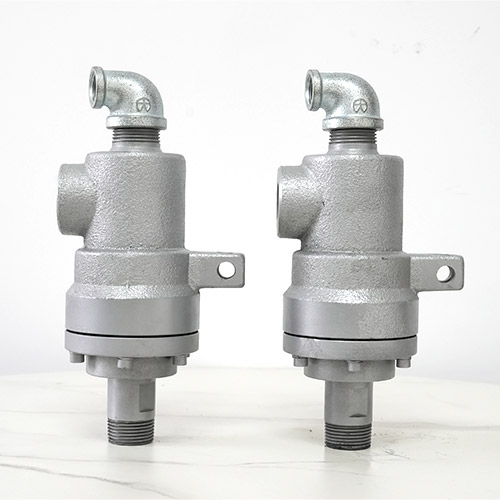
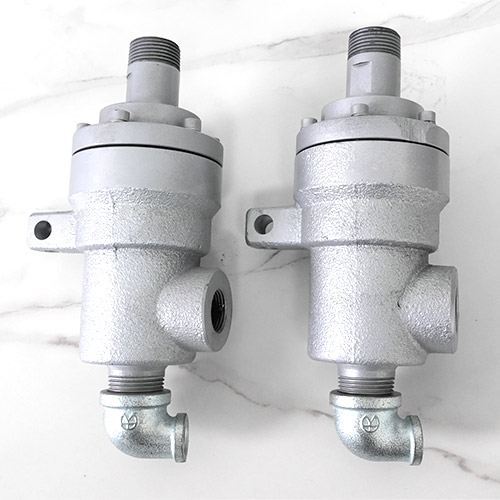
Even without internal issues, the external condition of the hot oil rotary joint and its connections can reveal signs of impending failure or indicate that it’s already compromised. Regular visual inspections are crucial.
- Corrosion or Pitting: Evidence of corrosion or pitting on the external housing, particularly if the swivel Joint operates in a corrosive atmosphere, can indicate material degradation that might eventually lead to structural failure or compromise the sealing integrity of the swivel Joint.
- Damaged or Loose Connections: Check all plumbing connections to and from the hot oil rotary joint. Loose fittings, damaged hoses, or cracked pipes can lead to leaks, putting additional stress on the rotary joint itself. While not a direct sign of swivel Joint failure, these can be contributing factors or easily mistaken for it.
- Excessive Play or Wobble: Attempting to gently rock the swivel Joint might reveal excessive play or wobble in the rotating components. This is a clear indication of worn-out bearings, which if left unaddressed, will quickly lead to catastrophic failure of the hot oil rotary joint.
Hot Oil Rotary Joint Troubleshooting Guide
| Symptom | Possible Cause | Recommended Action | Urgency |
| Visible Oil Leakage | Worn seals, damaged housing, improper installation. | Inspect seals; check torque on connections; consider replacement of the swivel Joint. | High |
| Abnormal Noise/Vibration | Worn bearings, misaligned components, contaminated fluid. | Inspect bearings; check alignment; investigate fluid quality; consider swivel Joint replacement. | Medium-High |
| Increased Drive Torque | Seized bearings, worn seals, internal friction. | Check for overheating; inspect seals/bearings; immediate rotary joint replacement likely. | High |
| Reduced Flow/Pressure Loss | Internal blockage, worn seals (bypassing fluid). | Check system for clogs; inspect seals for wear; consider rotary joint replacement. | Medium |
| Overheating of Joint Body | Excessive friction from worn bearings/seals. | Inspect bearings/seals for wear; ensure proper lubrication; rotary joint replacement likely. | High |
| External Corrosion/Damage | Environmental exposure, chemical attack. | Evaluate material compatibility; assess structural integrity; plan for rotary joint replacement. | Medium |
| Excessive Axial/Radial Play | Worn bearings, structural fatigue. | Immediate inspection and swivel Joint replacement. | Critical |
Conclusion
Reliable operation of hot oil swivel joint is fundamental to the efficiency, safety, and productivity of any industrial heat transfer system. Keeping an eye out for signs of wear—visible leaks, unusual noise or vibration, increased torque, reduced fluid flow, and external damage—is critical for proactive maintenance. Promptly addressing these indicators can prevent major system failures, avoid costly downtime, and protect personnel from hazardous situations. Remember, ignoring these warning signs can turn a minor problem into a serious issue for the swivel and your entire process.
At Modern Sealing, we specialize in manufacturing high-quality swivel Joint solutions designed for the most demanding applications, including those involving hot oil. Our expertise and patented technologies ensure the durability and performance you need. If you notice any of these signs on your existing hot oil rotary joint, or need a reliable, long-life replacement, contact us today. Let our experts help you ensure seamless and safe transfer of fluids in your high-temperature operations.
FAQ
How long does a hot oil rotary joint typically last?
The lifespan of a hot oil rotary joint varies significantly based on operating conditions (temperature, pressure, speed), fluid purity, maintenance practices, and the quality of the original unit. High-quality rotating union can last for many years, but continuous exposure to high heat and stress means they generally have a more defined lifespan than those handling cooler media.
Can a hot oil rotary joint be repaired, or does it always need replacement?
Some hot oil rotary joints are designed with replaceable internal components like seals and bearings, making minor repairs possible. However, extensive damage to the housing, shaft, or if the cost of repair approaches that of a new unit, typically warrants a full Swivel Joint replacement. Always consult the manufacturer’s recommendations.
What causes a hot oil rotary joint to leak prematurely?
Premature leaks in a hot oil rotary joint can be caused by several factors: improper installation leading to misalignment, operating beyond specified pressure or temperature limits, contamination in the hot oil (which can abrade seals), sudden pressure spikes, or using an incompatible rotating union for the application.
Is preventive maintenance important for a hot oil rotary union?
Yes, preventive maintenance is crucial. Regular visual inspections for leaks and external damage, monitoring noise levels, checking temperature around the rotating union, and ensuring proper system alignment can significantly extend the life of your hot oil rotary joint and prevent unexpected failures.
What should I look for when replacing a hot oil rotary joint?
When replacing a hot oil rotary joint, ensure the new unit is specifically rated for your system’s exact operating temperature, pressure, and speed. Verify material compatibility with your thermal oil. Look for features like robust bearings, durable sealing materials (e.g., carbon graphite, silicon carbide), and a design known for longevity in high-temperature applications. Always choose a reputable rotary union manufacturer.

